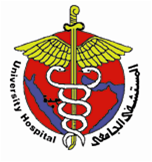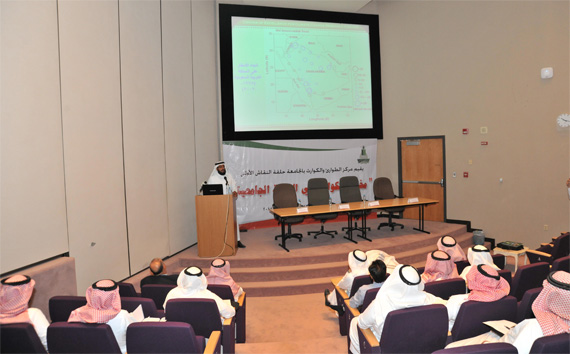“Disaster Preparedness in the University Campus” Workshop
|


A workshop entitled “Disaster Preparedness in the University Campus” was opened under the auspice of Prof. Abdullah Bafail, Vice Presidency for Projects, and organized by the Center of Emergency and Disaster in the University, was attended by Dr. Ibrahim Mohammed Juma, Director of Center of Emergency and Disaster, together with a number of employees and affiliates in the Main Auditorium of the University Hospital on Sunday, 13/06/1435H (13/04/2014G).
The workshop included three lectures. The first was the “Fires inside the University Campus”. The lecture was presented by Dr. Nabil Yassin AbdulShafi in which he talked about the causes of fire and described the different combustible materials. He also showed the difference between the United States of America and Saudi Arabian educational facilities. In the presentation, he stated that there are 6000 known cases of university fires in US in the year 2012 at a rate of 7 fire every 10 hours and a loss of $35 million annually. While in Saudi Arabia, there are 403 know incidence of fire occurred in educational facilities in the year 1432H (2010-2011G).
The Director of the Center of Excellence for Climate Change Research, Dr. Mansour Almazroui, also presented a lecture. In his lecture, he described the roles of the center when rain and floods occur. The center also established a Center for Emergencies and Disasters with the supervision of the Vice Presidency for Projects. Also, a committee was also formed with the participation of some agencies inside and outside the University. Lastly, the center had established early warning detection systems to reduce the risk of floods and rain.
On the third lecture, Dr. Abdulrahman Samarkandi presented his lecture regarding the risk regarding chemicals and hazardous materials. He described the different types and causes of accidents inside a chemical laboratory; Proper protection against chemical exposure; importance of safety and security in chemical laboratories in the University to maintain safe environment for the workers, the community, and to the environment; and lastly he talked about ways in reducing chemical exposure and reducing damages and losses in laboratories, equipments, and installations.
|